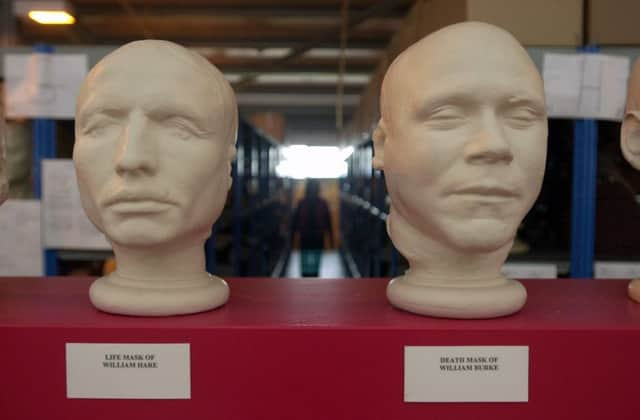Lonely death of anatomist who traded with Burke and Hare


It was a sorrowful, lonely end for the son of a tenant farmer from Kirkcudbrightshire who became one of the most respected anatomists of his day but was laid to rest in an unmarked grave.
Knox travelled widely though Europe and South Africa following his graduation from Edinburgh University in 1814. After joining the army, he was posted to Brussels to treat those wounded at the Battle of Waterloo
Advertisement
Hide AdAdvertisement
Hide AdHe returned to the capital in 1822 where he established a museum of comparative anatomy and pathology at the College of Surgeons. At his height, he taught 500 students.
Knox was considered a great operator but his flamboyant, arrogant and unforgiving ways left him increasingly adrift from Edinburgh’s powerful medical establishment.
His demonstrations of human dissections at the college were highly charged affairs, with Knox often dressed in a formal black coat and white cravat for the show. He would often adorn himself with a large diamond ring, watch seals and pendants.
But, with the availability of corpses for the famed dissections limited to the bodies of those who had been executed, Knox became involved with Burke and Hare who had taken to killing vagrants and prostitutes in the capital and profiting from their remains.
Advertisement
Hide AdAdvertisement
Hide AdIn November 1827, Knox paid £7 and 10shillings for Burke and Hare’s first offering, a pensioner who had died naturally in Hare’s West Port lodging house.
After the pair hatched a lucrative killing spree, the price paid by Knox rose to £15 depending on the condition and age of the cadavers.
A police investigation was launched after a body was seen by a witness in the West Port lodging house. Hare was given immunity by the Lord Advocate if he testified against his accomplice. Burke was tried and executed on January 28, 1829.
Knox was never called to give evidence but the Edinburgh public turned on the anatomist, who was also cleared of any knowledge of the murders by a medical committee.
Advertisement
Hide AdAdvertisement
Hide AdOn Feb 12 1829, his house was surrounded by a howling crowd, with an effigy of the medic hung from a tree outside. Every front window of his home was smashed by stones.
Knox was sidelined by Edinburgh’s medical establishment. In 1842, following the death of his wife, he moved to London where he published several books. He died in Hackney in 1862 and was buried in an unmarked grave.
